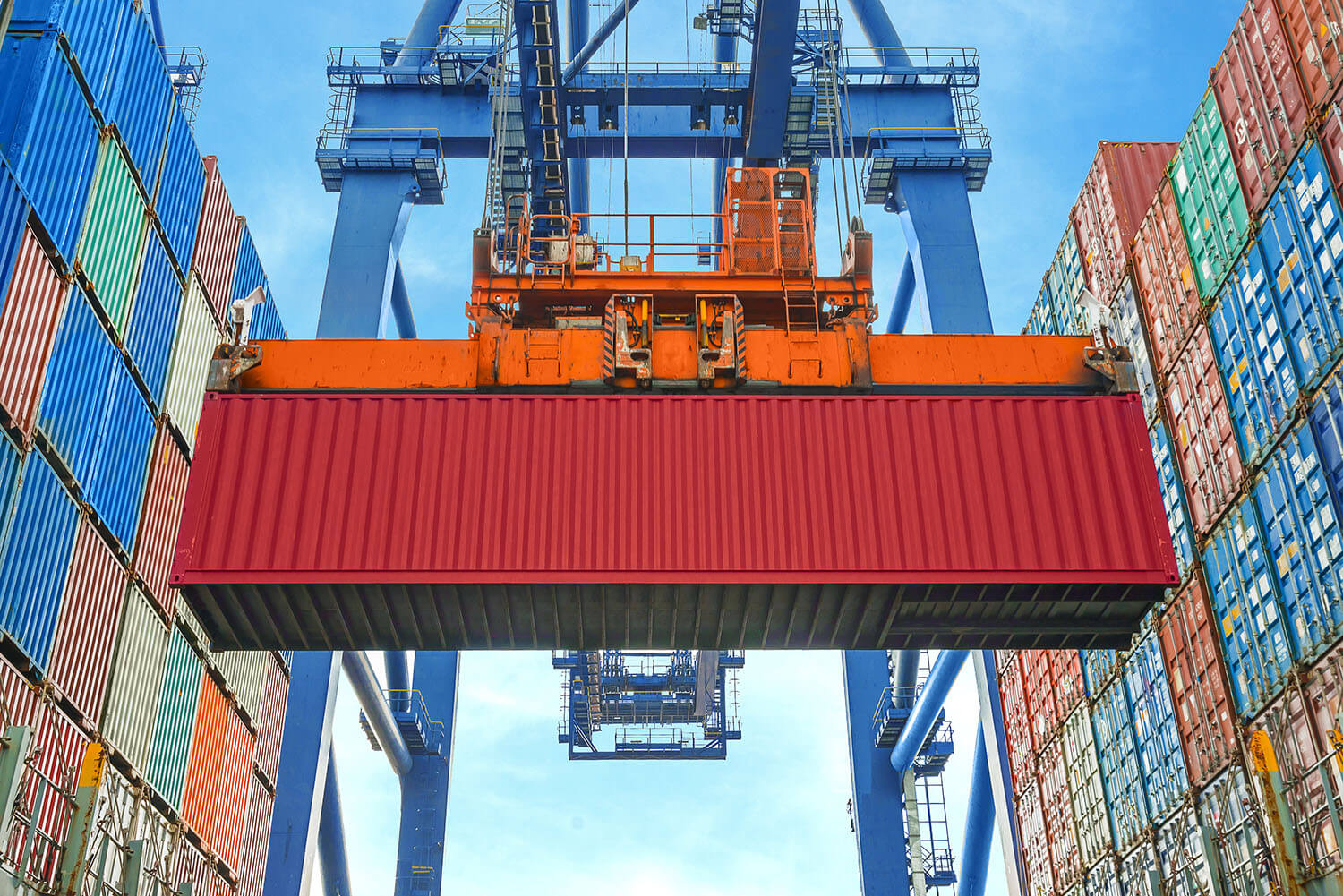How to Protect Against Air Cargo Moisture Damage
Let’s say you’re in the business of flying goods from one place to another. The cargo manifest includes some meat from Australia, which you’ll be transporting to Los Angeles. The meat is properly frozen in its special shipping container, and it’s cautiously loaded onto the freight plane. The pilots make the journey with ease—no turbulence or onboard mechanical problems. But when the plane finally lands at LAX, the cargo attendants are greeted by the sweet smell of rotten meat. The whole container has been spoiled, for inexplicable reasons. Most likely, your food and beverage shipment was damaged by moisture. This is one of the most common frustrations of perishable cargo transportation.
According to an industry insider, about 11% of cargo loss claims stem from water damage and contamination, both of which are often caused by moisture damage.
Here’s the good news: it’s easy to protect your products against moisture damage. You only need to equip your shipping containers with the right tools. Here’s everything you need to know about air cargo moisture damage prevention.
What Causes Moisture Damage?
When it rains, it pours, and that’s especially true when you’re shipping cargo. There’s a phenomenon called “container rain” in which a heavy build-up of moisture occurs within the shipping container. Water droplets stick to the walls and ceiling of the container, and they ultimately “rain” down upon the goods that you’re transporting. Sometimes it’s referred to as “container sweat.” Gross.
So, what causes container rain, anyway? There are three main reasons: temperature shifts, humidity, and leaks.
Temperature Shifts
Simple temperature fluctuations are the main culprit behind container sweat. When the temperature drops from warm to cold, any moisture inside the shipping container will condensate and turn into water droplets. Condensation is especially prevalent in airplane cargo holds because the temperature up in the sky is always cooler than the temperature on the ground. Condensation will happen almost immediately after the plane takes off.
Humidity
Warm air holds more moisture than cold air. Your cargo is more likely to be at risk of moisture damage if you’re transporting it from a humid climate. It’s difficult to prevent warm air from entering the shipping containers when you’re filling them with products. Warm air can also easily get into the cargo hold when you’re loading shipping containers onto the freight plane.
Leaks
Containers that are loaded with perishable items are more at risk of moisture damage. Perishable goods need to be frozen or refrigerated in transit. If there are any leaks in the storage containers, then there will be a greater amount of moisture that condenses within the container. Air cargo with leaking seafood, fruit, and meat containers can cause extensive container rain that actually contaminates the food by causing fungal growth. This is what makes perishable cargo transportation so difficult.
Impact of Air Cargo Moisture Damage
There are a lot of factors to account for when you’re transporting air cargo, but moisture is one factor in particular that you can’t afford to overlook. Container rain can cost businesses a huge sum of money in spoiled goods, and it can also cause long-term damage to important shipping assets. Here are some of the ways that air cargo moisture can negatively impact your business.
Rust
Moisture causes metal to rust. Your shipping containers are going to corrode faster when they’re exposed to container rain. Corroded shipping containers are going to be less suitable for handling. But corroded airplane parts are a bigger concern. There’s a significant amount of metal that makes up the parts in and around an airplane’s cargo hold. Excessive moisture can cause long-term corrosion to these metals that, in a best-case scenario, would require extensive repair work. A worst-case scenario would be structural or mechanical failures in the aircraft.
Contamination
If you’re transporting perishable goods, the worst damage that container rain can cause is food contamination. When the moisture falls back upon the food products, it can cause fungal growth that spoils the entire container of perishable goods.
Additionally, container rain can damage any goods that are sensitive to water, like furniture products or some types of fabrics.
Poor Sustainability
Sustainability is more important than ever. When moisture damage ruins products, precious resources go to waste and products needlessly end up in landfills. Every shipping company has a moral responsibility to be as sustainable as possible, so businesses must do whatever they can to prevent moisture damage from spoiling perfectly good products. The main goal of perishable cargo transportation should be to prevent products from perishing.
How to Prevent Air Cargo Moisture Damage
So what’s the key to air cargo moisture damage prevention? The best way to prevent moisture damage is to outfit your storage containers with materials that reduce or minimize condensation. Here are a few effective methods you should employ.
Choose the Right Pallets
Your choice of pallets may affect the amount of moisture that’s in your shipping container. Wood pallets are among the most common types of pallets that are used to carry products, but wood is a material that tends to absorb a lot of moisture. If the wood pallets are exposed to rain or humid weather, they’ll likely absorb moisture that will condense inside your storage container. If you’re frequently transporting products from rainy or humid areas, you might prefer using plastic pallets instead. However, there’s no doubt that wood pallets are affordable and convenient. Fortunately, there are still some very effective ways to control condensation if you can’t make the switch.
Use Absorbent Pads
The easiest and most affordable way to defend your products against container rain is to use absorbent pads (also known as a “cargo transport pallet pad” or a “pallet moisture prevention pad”). These are basically air cargo pallet covers that prevent moisture and rust. Absorbent pads are simple—you just place them over your pallets before you set any products on top of them. The pads will absorb any moisture that condenses from the pallet or from air cargo with leaking boxes, so they’re incredibly helpful if you’re transporting perishable goods and cooled products.
Absorbent blankets are another great way to protect against container rain. Absorbent blankets hang over the top of your products within the shipping container and they absorb moisture as it condenses. They also prevent water droplets from falling down onto your products.
Absorb Moisture with Desiccants
If you’re shipping dry products, then you might benefit from hanging moisture desiccant bags in your shipping container. Desiccant bags are extremely effective at absorbing ambient moisture, and they’re a tremendously effective way to tackle air cargo rust prevention and keep your storage containers in great shape.
Let’s Recap
Container rain is practically unavoidable when you’re transporting air cargo. Failure to adequately protect your products against moisture can cause rust and product damage, especially with perishable items. But all you need to do to protect your air cargo from moisture damage is to use absorbent pads, blankets, and desiccants to dehumidify your shipping containers. Including these materials in storage containers is the easiest way to practice air cargo moisture damage prevention, especially when it comes to perishable cargo transportation.

Sandra Malouf is the President of Eurolog Packing Group and has spent her career focused on Industrial Packaging. With a proven track record of helping businesses avoid supply chain disruptions, Sandra’s visionary leadership elevates the industry. She’s committed to developing sustainable practices and continues to shape the future of industrial packaging by listening to the customer and offering unique solutions applicable to various industries across the world. The company’s main focus is temperature stabilization and moisture damage prevention in exports affected by extreme variations in global temperatures.
© 2024 Eurolog Packing Group








